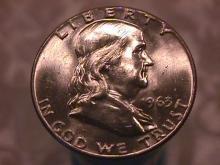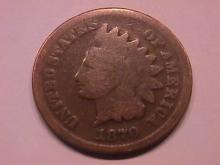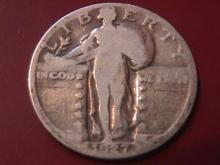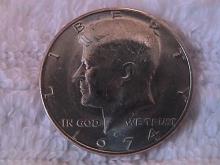NEW 2ed spiral Complete Guide Barber Quarters Lawrence

$125.00
NEW 2ed spiral Complete Guide Barber Quarters Lawrence
Description:
WE SHIP WORLDWIDE VIA FIRST CLASS & PRIORITY & EXPRESS EMS INTERNATIONAL
The Complete Guide to Barber Quarters 2nd edition 1994 by David Lawrence
New spiral bound 2nd edition. These came new from the publisher to a wholesaler where they sat for about 15 years
Long OUT OF PRINT
Rare numismatic booksellers are asking $ 125.00 for a USED copy Plus shipping for this book.
Hard to find as not many copies were printed
BUY THE BOOK BEFORE YOU BUY THE COIN
Satisfaction guaranteed.
Collecting Barber Quarters
By Mike Thorne, Coins Magazine
August 27, 2008Other News & ArticlesGold Buys FreedomCollecting CC MorgansThe Scary "Dime Weevel"
When you think of popular U.S. quarter series, the first one that probably comes to mind is Washington quarters, because of the popularity of the state quarter series. Or, you might think of Standing Liberty quarters, which almost everyone agrees have a wonderful design. You might even think of Seated Liberty quarters, because of the challenge of collecting such a lengthy series.
But Barber quarters may be overlooked in your consideration of popular U.S. quarters. For one thing, even their biggest fans are likely to think of the design, particularly the obverse design, as bland at best.
And if you're not a fan of the design, as Walter Breen almost certainly wasn't, then you might write something like Breen wrote in his Complete Encyclopedia of U.S. and Colonial Coins: "The whole composition is Germanically stolid, prosy, crowded (especially on rev[erse]), and without discernible merit aside from the technical one of low relief."
The design was the work of Mint engraver Charles E. Barber, who, if you believe Breen, sabotaged a design contest for new coin designs so that he would be asked to produce the new designs himself. Thus was born the dime, quarter, and half dollar designs that bear his name.
According to Breen, "Barber's new obv[erse] was a mirror image of the Morgan dollar head," whereas the reverse design was a copy of "Robert Scot's adaptation of the Great Seal of the United States" back in 1804. Obviously, Breen didn't think much of Barber's creativity in the design.
Of course, if you started collecting when I did in the 1950s, then you may view Barber quarters with a certain degree of affection. For me, Standing Liberty quarters could sometimes be found in quarter rolls from the bank along with Washington quarters, with an occasional "exotic" Barber quarter. Of course, most Barbers in circulation in the 1950s were likely to be worn down to the grade of Good or even lower.
I did, however, have two great Barber quarter acquisitions when I was a kid. One was an 1897-O in Extremely Fine-About Uncirculated, for which I think I paid 30 cents. I should note here that I grew up in Louisiana, so coins from the New Orleans Mint may have been more plentiful in the state. The other prize was a 1904-O, for which I paid face value, which was in even better condition than the 1897-O. I remember that I got one of the coins from a friendly trolley driver whose last stop was at the junior high where I went to school.
Of course, you can't think of the coins as being worth anywhere near what they're worth today. In my first A Guide Book of United States Coins, a 1958 edition, the 1897-O listed for $11 in Fine and $70 in Uncirculated, with no grades in between. The 1904-O was worth $10 and $125 in the two grades, respectively. Obviously, they were worth considerably more than the 55 cents I paid for them.
In the early 1970s, I bought another nice New Orleans Barber quarter for a ridiculously low price. It was an 1895-O in AU that was priced at $1 at a country store in a small community. A local banker had donated a few coins to be sold at the store, and presumably whoever did the pricing didn't have a clue as to what they were worth. I recall that some of them were actually overpriced while others were grossly underpriced. Naturally, I took advantage of the latter.
At one point early in my modern collecting days, which began in 1970, I worked to put together circulated sets of all three Barber series. As you can probably guess, I succeeded easily with the dimes and half dollars but failed with the quarters. The problem was that I didn't take the advice that I have given for years, which I had gotten from reading Q. David Bowers: Buy the keys first.
So you should be able to figure out what happened. By the time I got to the 1901-S, its price had surpassed my budget. If I had bought it first, when it was still relatively affordable (I passed on a Good/About Good priced at $250), then completing a low-grade circulated set would have been a snap. As I recall, I paid $90 for my first 1913-S, which was a nice Good+ worth well over $1,000 today.
I bought an EF 1896-S for a token amount. The only problem was that the coin was a dog, with major pitting and stains. Still, if the 1913-S was less than $100 in G+, I could have gotten an 1896-S in the same grade for a song.
Except for the big three, which I've briefly mentioned, the remaining Barber quarters are not particularly difficult to obtain, at least in well circulated condition. As you get to higher grades, however, many of the dates become remarkably difficult to find. Let's take a look at what's involved in putting together a date-mint mark set of Barber quarters.
One good source of information about Barber quarters is The Complete Guide to Barber Quarters (2nd ed.) by David Lawrence. If you're interested in the series, you should try to find a copy if you don't already have one. I found four used copies listed on Amazon for prices ranging from about the list price ($29.95) to $37.50. These are actually not bad prices for out-of-print coin books, from my experience.
Using his own rarity rating scale (R1, common; R2, slightly better date; R3, better date; R4, scarce; R5, very scarce; R6, extremely scarce; R7, rare), Lawrence classifies the coins in the series according to four different grade ranges: G/VG, Fine/Very Fine, EF/AU, and Mint State. It's interesting that the big three are all rated either R4 or R5 in G/VG, and these are the only dates that fall in those categories in the lowest collectible grades.
The Barbers I told you I acquired as a youth are rated either R4 (1904-O) or R5 (1897-O) in EF/AU, whereas the 1895-O in AU is classified as an R4. Several of the low-mintage dates in the series that I think are worth accumulating are rated as R3s in G/VG (e.g., 1912-S, 1913, 1914-S, 1915-S).
The big three have the lowest mintages in the series, with the 1901-S and 1913-S having mintages below 100,000 (72,664 and 40,000, respectively). In this lineup, the 1896-S is a distant third (188,039).
In terms of value, at the present time the 1901-S and 1913-S are both worth more than $1,000 in G ($7,000 and $1,500, respectively, according to Numismatic News "Coin Market"). The 1896-S is well back at $750, but its value has been rising recently, and I can easily see it reaching the $1,000 plateau soon.
Back when it (and the others, as well) were much less pricy, I bought a low-grade 1896-S for less than $100 from a dealer friend of mine. I thought it would easily grade G-4, so I submitted it to ANACS when the service was still affiliated with the American Numismatic Association. ANACS eventually returned it to me with a note saying that it was too low a grade to



